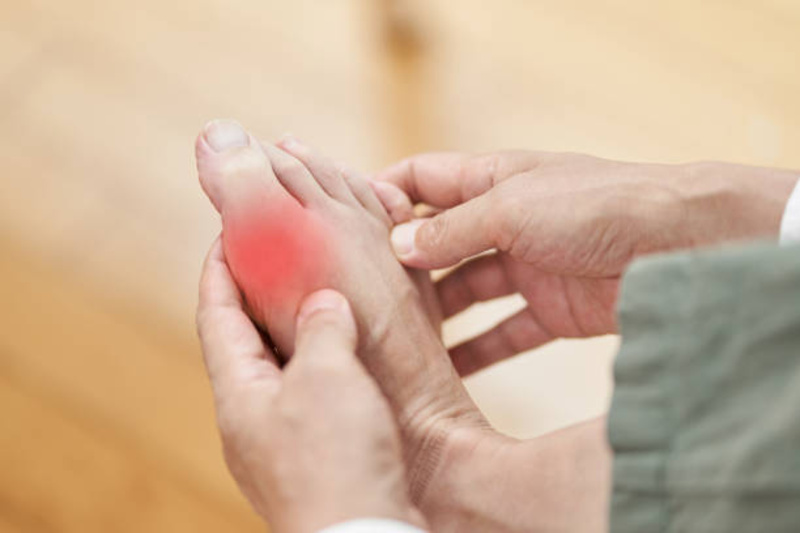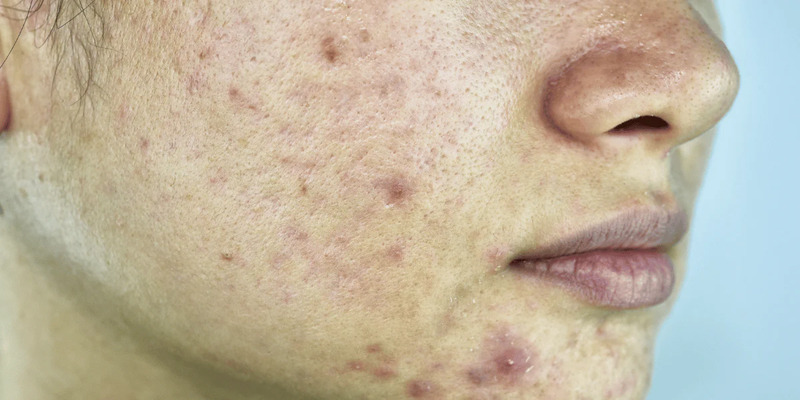Gout is an inflammatory condition caused by elevated uric acid levels in your blood, which can then crystalize and form deposites in joints such as the big toe, causing sudden and severe swelling, redness, stiffness and pain. Although there is no cure for gout, experts are increasingly finding that many lifestyle changes and medical interventions may help prevent or reduce flare-ups. Read on to find out how you can take action today to gain control over this intimidating condition!
Understanding Gout - Symptoms, Causes, and Risks:
It is caused by a buildup of uric acid crystals in the joints, which leads to inflammation and swelling. Symptoms of gout include;
- Redness
- Tenderness
- Swelling in the affected joint, which is most commonly the big toe
Although it is more common in men than women, anyone can develop gout. Certain risk factors for developing gout include a family history of the condition, being overweight, and consuming a diet high in purines, which are found in foods like red meat, seafood, and alcohol. While gout can be incredibly painful and uncomfortable, it can be managed through lifestyle changes and medication.
Lifestyle Changes that Can Help Reduce Gout Risk:
Although gout may not be at the forefront of everyone's mind, there are certain lifestyle changes that can help reduce the risk of this painful condition. One such change is maintaining a healthy weight through a balanced diet and regular exercise. This is because being overweight increases stress on the joints - particularly in the feet - which can exacerbate gout symptoms.
Limiting intake of high-purine foods and alcohol can help reduce the amount of uric acid in the body, which is a major risk factor for gout. It may take time and effort to make these lifestyle changes, but the payoff of reduced gout risk and improved overall health is worth it.
Dietary Guidelines to Minimize Gout Symptoms:
Gout is a painful condition that affects the joints, causing swelling, redness, and stiffness. The good news is that changes to your diet can help minimize the symptoms. The key is to control your intake of purines, which are substances found in many foods that can cause uric acid to build up in the body.
To reduce your risk of a gout attack, it's important to limit your consumption of alcohol, red meat, and seafood, in particular. Instead, focus on incorporating plenty of low-fat dairy products, fruits, and vegetables into your diet.
Exercise for Managing Gout Symptoms:

Living with gout can be challenging. The intense pain and discomfort can be unbearable at times. Incorporating regular exercise into your daily routine can be a game-changer in managing your symptoms. Exercise helps improve joint flexibility, strengthens muscles, and reduces inflammation.
Low-impact exercises like swimming, walking, and yoga are excellent options for individuals with gout. They provide an opportunity to improve overall health without putting too much strain on your joints.
The Importance of Exercise in Gout Management:
Exercise is an important aspect of gout management. Not only does it help improve joint flexibility, strengthen muscles, and reduce inflammation, but regular exercise also has numerous benefits for overall health. It can help manage weight, reduce the risk of other chronic conditions such as heart disease and diabetes, and boost mood and energy levels.
Recommended Exercise Types for Individuals with Gout:
Low-impact exercises are generally recommended for individuals with gout as they minimize strain on the joints while still providing numerous health benefits. Some specific exercise types that may be beneficial for managing gout symptoms include:
- Swimming: This is a great low-impact exercise that can help improve joint flexibility and reduce inflammation.
- Walking: Taking regular walks can help with weight management and improve overall health.
- Yoga: This gentle form of exercise can help increase joint flexibility, strength, and balance while also promoting relaxation and stress reduction.
Tips for Starting an Exercise Regimen with Gout:
- Consult with your doctor before starting any new exercise regimen, especially if you have gout or any other health conditions.
- Start slow and gradually increase the intensity and duration of your workouts.
- Listen to your body and stop if you experience severe pain or discomfort during exercise.
- Stay hydrated to help flush out excess uric acid in the body.
- Consider working with a physical therapist who can help design an exercise plan tailored to your specific needs and abilities.
Precautions to Take when Exercising with Gout:
While exercise can be highly beneficial for managing gout symptoms, it's important to take some precautions to avoid worsening your condition. These include:
- Avoiding high-impact activities that put a lot of stress on your joints, such as running or jumping.
- Being mindful of any excess strain on the affected joint and modifying exercises accordingly.
- Taking breaks and not pushing yourself too hard, especially during a gout flare-up.
By making lifestyle changes such as improving your diet and incorporating regular exercise into your routine, you can significantly reduce the risk of gout attacks and improve your overall well-being.
How Exercise Impacts Gout Symptoms and Flare-ups?
Exercise can have both positive and negative impacts on gout symptoms and flare-ups. On one hand, regular physical activity can help reduce inflammation, improve joint flexibility and strength, and aid in weight management - all of which can lessen the frequency and severity of gout attacks.
The Role of Medication in Preventing Gout Attacks:
Gout attacks are notoriously painful and disruptive to daily life. However, by properly managing the condition with medication, many people with gout can significantly reduce the frequency and severity of their attacks. Medications used in gout treatment can help to lower uric acid levels in the blood, which is the root cause of gout attacks.
Whether taken daily or during a flare-up, these medications can provide relief and prevent further damage to the joints. Of course, medication should be combined with lifestyle changes, such as a healthy diet and regular exercise, to fully manage gout symptoms.
Natural Therapies to Reduce Gout Pain and Discomfort:

Medication can provide relief, many people prefer natural therapies to reduce their gout symptoms.
Some tried-and-true remedies include staying hydrated, eating an anti-inflammatory diet, and avoiding trigger foods like red meat and alcohol. Some people find relief by applying ice or heat to the affected area or practicing gentle exercises like yoga or swimming.
Conclusion:
Gout can be an uncomfortable, painful experience but this doesn’t mean you have to suffer alone. It’s vital that everyone at risk of developing gout is aware of the symptoms and risks. With lifestyle and dietary changes, it is possible to mitigate against the chances of gout developing completely. Drugs such as anti-inflammatory medications are also helpful in reducing gout pain and discomfort. Natural therapies like turmeric and ginger have been proven to reduce symptoms as well.







